In December 1966, preparations continued for the first crewed Apollo mission, officially designated as AS-204 but better known as Apollo 1, planned for launch in February 1967. In March 1966, NASA assigned spaceflight veterans Virgil I. “Gus” Grissom and Edward H. White and spaceflight rookie Roger B. Chaffee as the crew to fly this important mission. In November, NASA assigned a new backup crew to the flight following changes to the overall Apollo schedule. With this late assignment, Mercury 8 and Gemini VI veteran Walter M. Schirra and spaceflight rookies Donn F. Eisele and R. Walter Cunningham dedicated their time to catching up in their training. At NASA’s Kennedy Space Center (KSC) in Florida, engineers made repairs to the Apollo spacecraft to prepare it for flight.
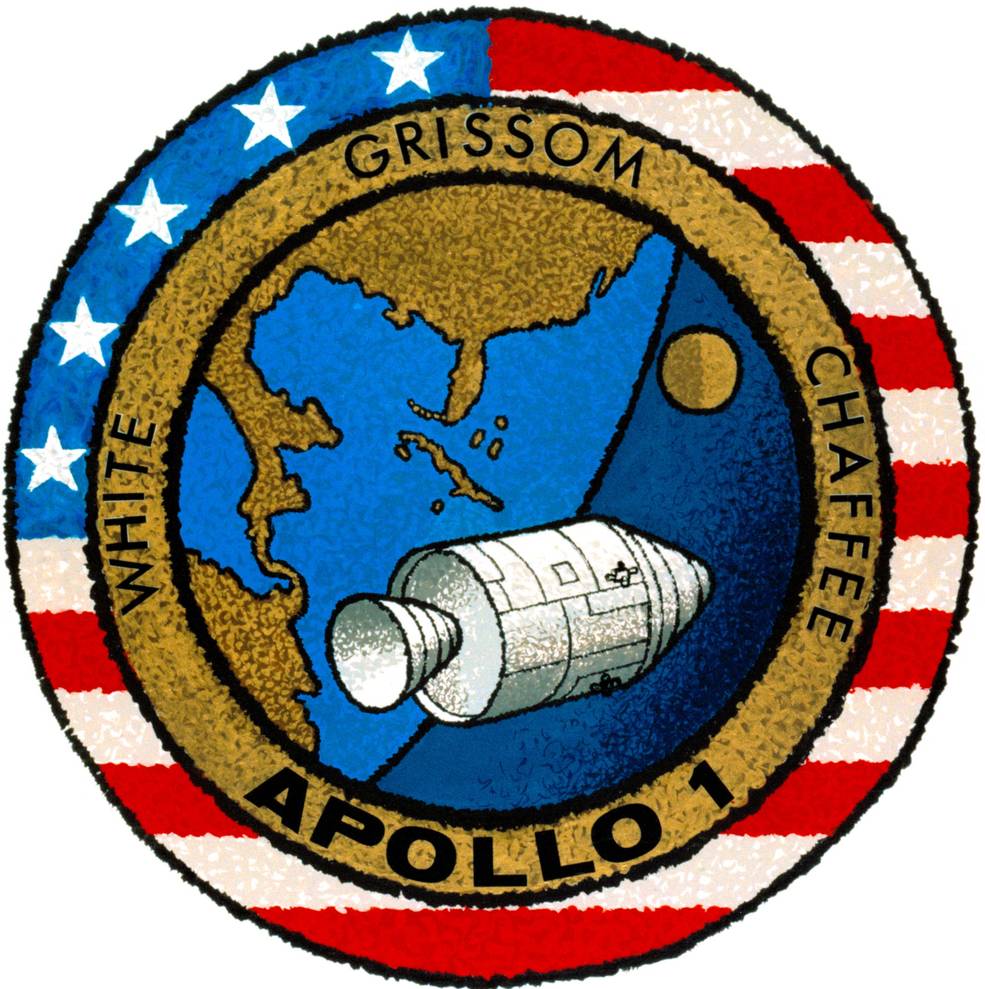
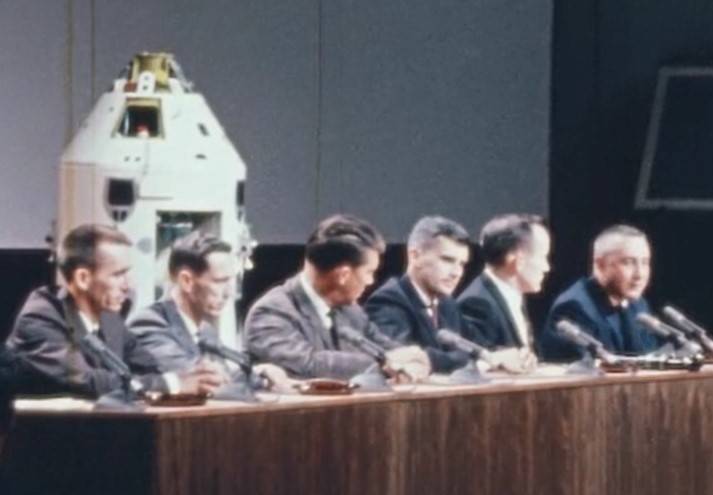
Left: The crew patch for the Apollo 1 mission. Right: The newly-named Apollo 1 backup
astronauts R. Walter Cunningham, left, Donn F. Eisele, and Walter M. Schirra, join
prime crew members Roger B. Chaffee, Edward H. White, and Virgil I. “Gus”
Grissom for a press conference.
In November, NASA announced changes to the Apollo flight schedule. Following the Apollo AS-204 mission, better known as Apollo 1, NASA originally planned AS-205 as essentially a repeat of the first flight. Since that seemed somewhat redundant, NASA decided to cancel the repeat flight. The crew of the original AS-205 mission, Schirra, Eisele, and Cunningham, assigned just two months earlier, now became the backup crew for AS-204. The original AS-204 backup crew of James A. McDivitt, David R. Scott, and Russell L. Schweickart were reassigned to a later mission. As part of a two-day Apollo Press Symposium held Dec. 15-16, 1966, at the Manned Spacecraft Center (MSC), now NASA’s Johnson Space Center in Houston, the prime and backup crews described the upcoming mission and answered reporters’ questions. Apollo 1 was planned as an open-ended mission of up to 14 days’ duration, with mission managers evaluating the status of the crew and spacecraft each orbit for the first six orbits to determine whether the flight could continue. If all proceeded as planned, managers would then assess their status daily, up to the maximum of 14 days. The main goals of the mission included proving the space worthiness of the spacecraft, and testing the Service Module’s large engine, which on future lunar missions would perform the critical tasks to insert the spacecraft into lunar orbit and later to send the astronauts homeward.
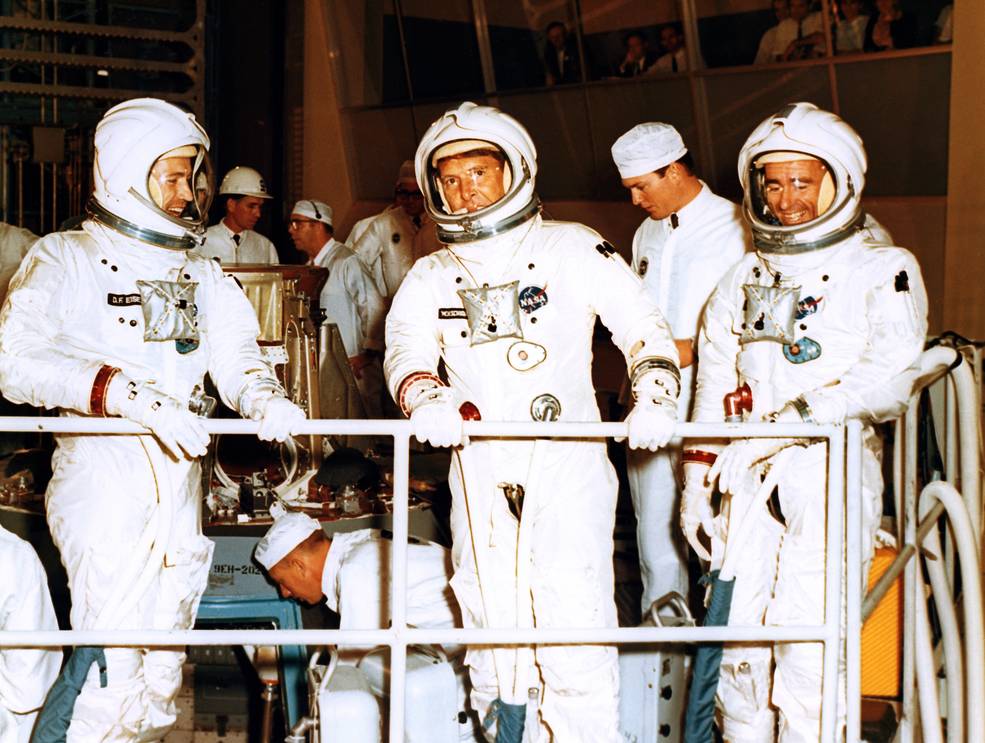
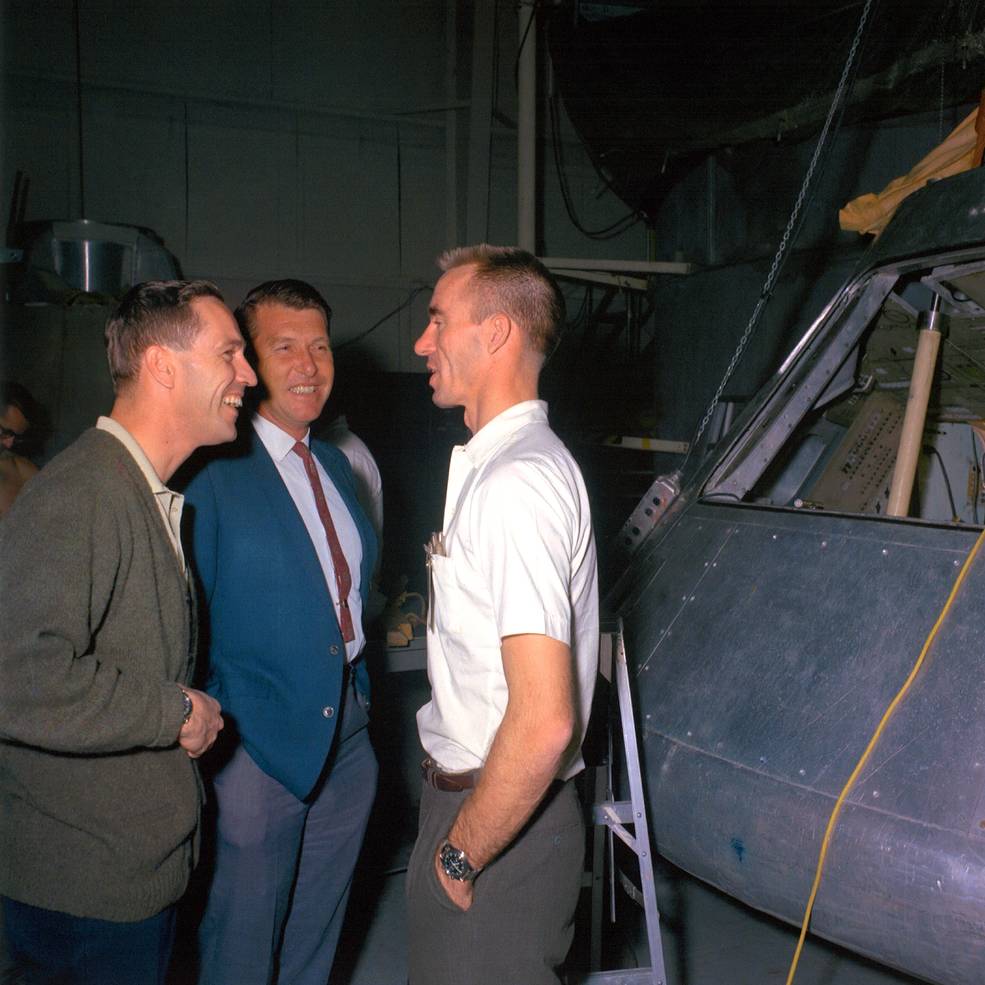
Left: The newly assigned Apollo 1 backup crew of Donn F. Eisele, left, Walter M.
Schirra, and R. Walter Cunningham in pressure suits for a training session at
the North American plant in Downey, California. Right: Eisele, left, Schirra, and
Cunningham in front of a boilerplate Apollo Command Module at the Manned
Spacecraft Center, now NASA’s Johnson Space Center in Houston, preparing
for a water egress training session.
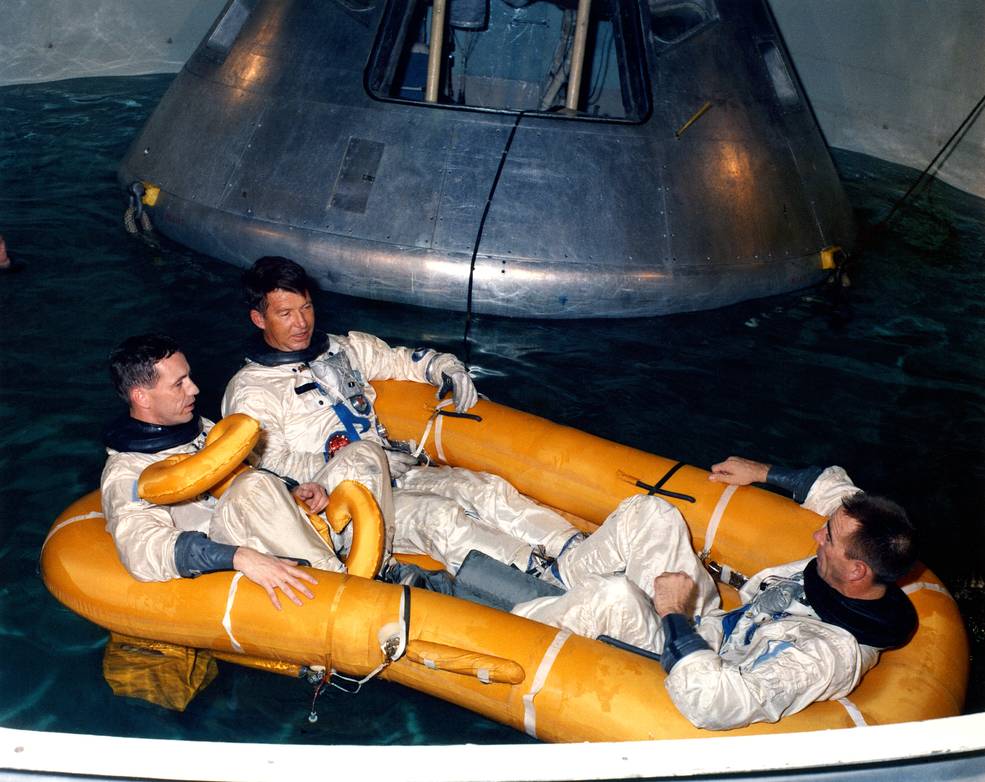
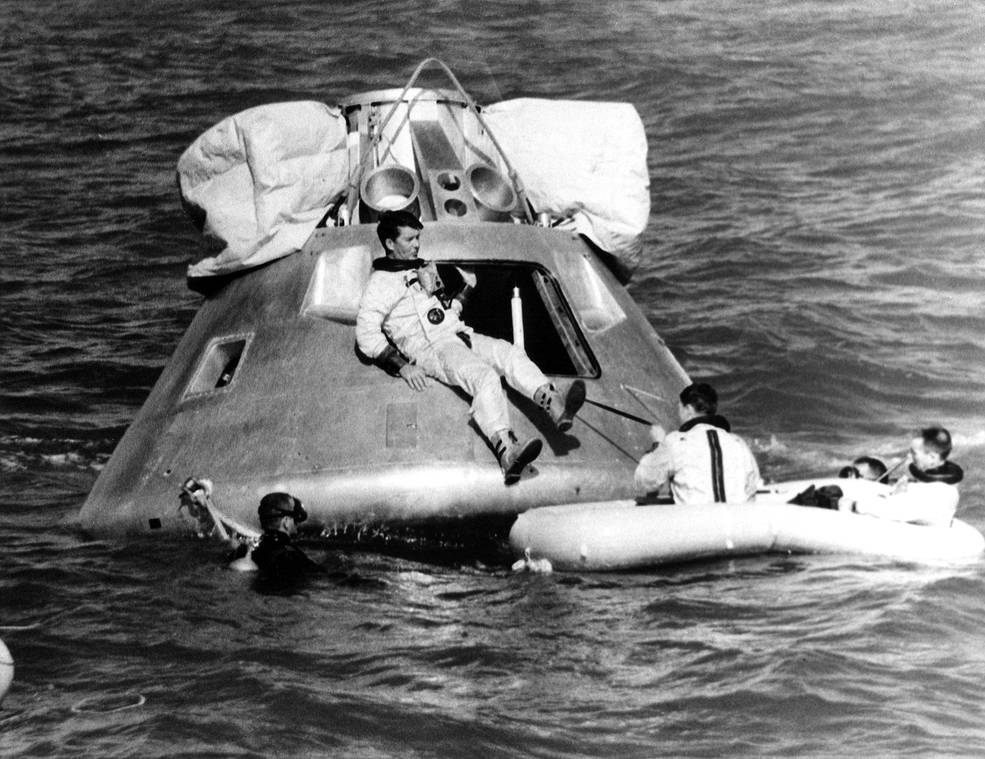
Left: Apollo 1 backup astronauts Donn F. Eisele, left, Walter M. Schirra, and
R. Walter Cunningham float in a life raft during water egress training at the
Manned Spacecraft Center, now NASA’s Johnson Space Center in Houston.
Right: Schirra, left, Eisele, and Cunningham during water egress
training in the Gulf of Mexico.
On December 5, to train for their splashdown and egress from their spacecraft, Schirra, Eisele, and Cunningham practiced with a mockup capsule in a water tank in MSC’s Building 260. The next day, to add more realism to the training, they rehearsed the water egress procedures in the Gulf of Mexico off the coast of Galveston, Texas. Workers from MSC’s Landing and Recovery Division supervised the exercise supported by the Motorized Vessel (MV) Retriever and the U.S. Coast Guard. After the astronauts boarded the spacecraft, crews on the MV Retriever closed the capsule’s hatch and lowered it into the water in the Stable II, or apex down, position. The astronauts commanded three balloons to inflate to right the spacecraft into the Stable I, or apex up, position. They then egressed from the capsule onto life rafts, from which Coast Guard helicopter crews picked them up.
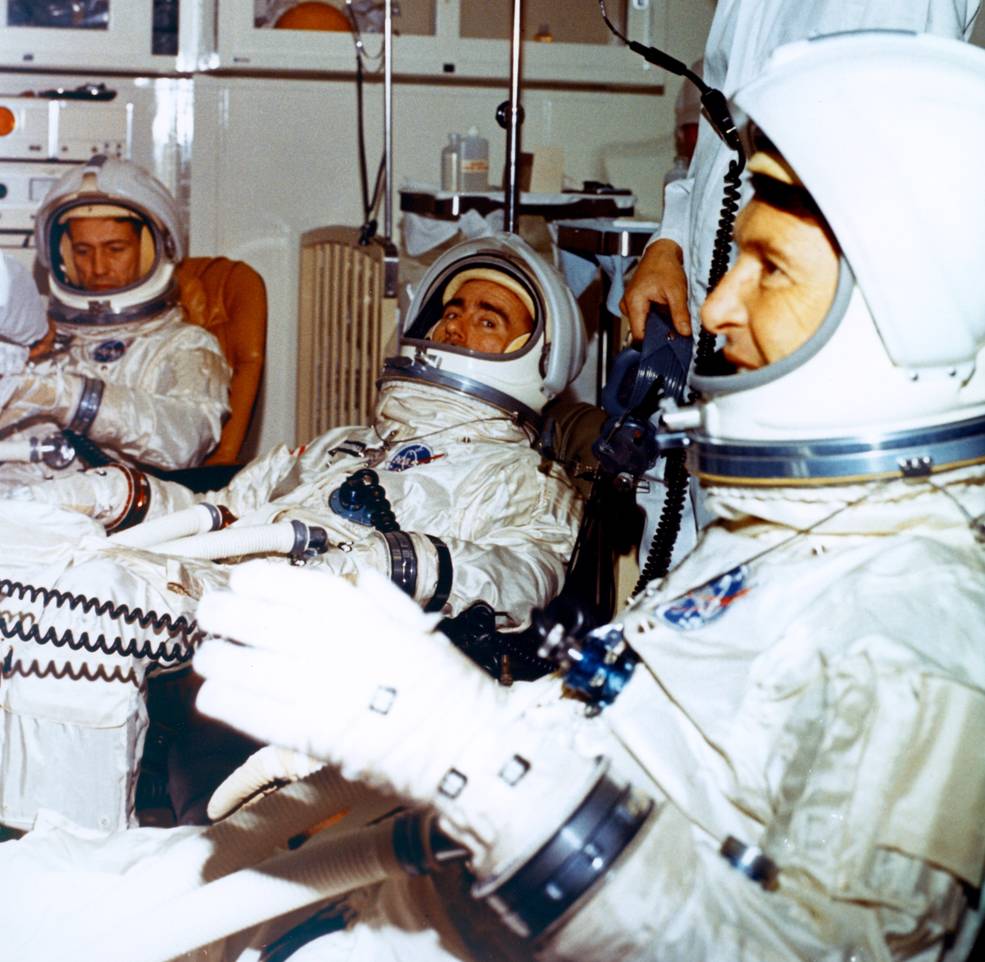
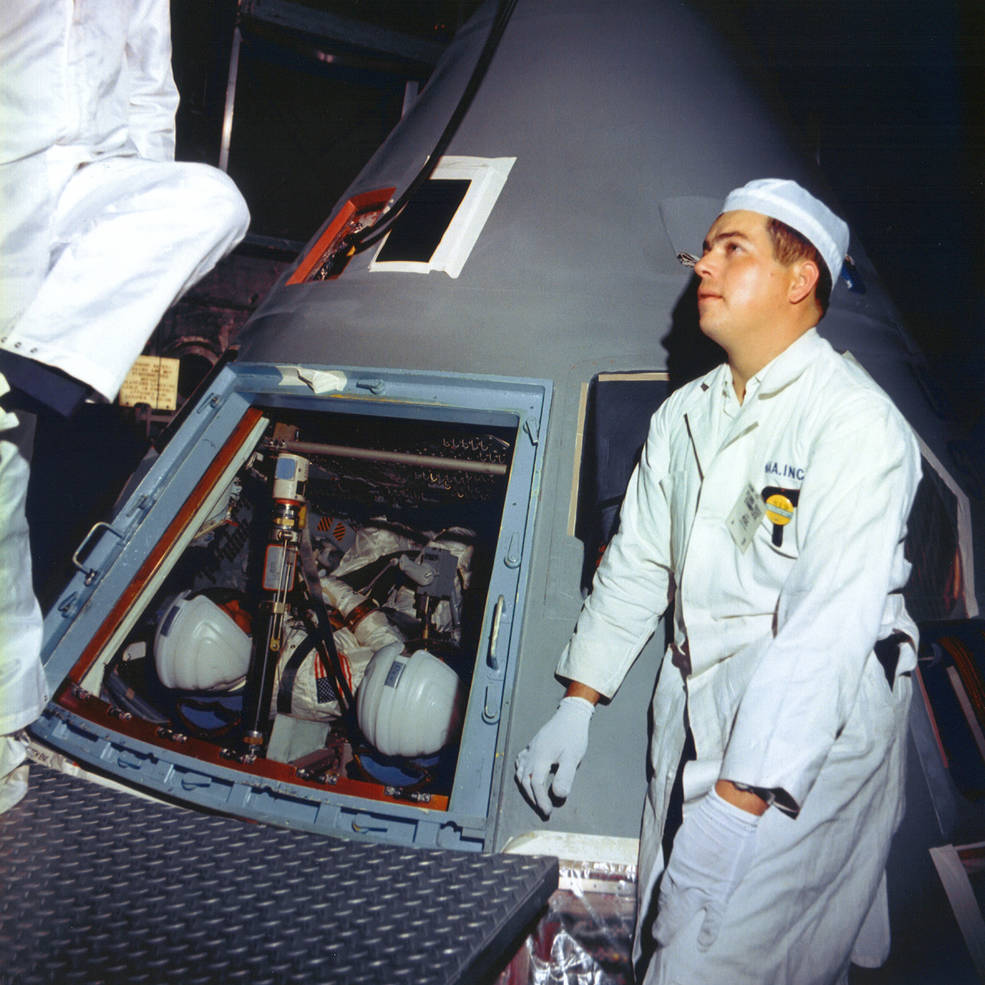
Left: Apollo 1 backup astronauts Donn F. Eisele, left, R. Walter Cunningham,
and Walter M. Schirra suit up for an altitude test of the spacecraft at NASA’s
Kennedy Space Center (KSC). Right: Inside the Apollo Command Module in the
KSC vacuum chamber, Schirra, left, Eisele, and Cunningham (not visible)
prepare for an altitude test.
After Grissom, White, and Chaffee completed altitude tests with their Apollo spacecraft in a vacuum chamber in KSC’s Manned Spacecraft Operations Building (MSOB), in November the heat exchanger in the capsule’s environmental control system failed, requiring replacement of the unit. During retesting of the system in early December, it suffered a coolant leak requiring this new unit to be replaced as well. The third unit passed its tests, and on Dec. 30, Schirra, Eisele, and Cunningham completed a full altitude run in the vacuum chamber to close out the pressure integrity tests. The new year would see the spacecraft removed from the vacuum chamber on Jan. 3, 1967, and transported from the MSOB to Launch Pad 34 three days later to be stacked atop its Saturn IB rocket in preparation for preflight testing with the crew.
To be continued…
World events in December 1966:
December 1 – The date and location of the first Super Bowl are announced as January 15, 1967, at the Los Angeles Coliseum.
December 3 – Television pop group The Monkees make their live concert debut at the Honolulu International Center Arena.
December 7 – The U.S. launches the ATS-1 (Applications Technology Satellite-1), the first experimental geosynchronous satellite.
December 8 – The U.S. and the U.S.S.R. sign a treaty prohibiting nuclear weapons in space.
December 15 – Walt Disney dies at age 65.
December 18 – Dr. Seuss’ “How the Grinch Stole Christmas” airs for the first time on CBS.
December 19 – The United Nations adopt the Outer Space Treaty – it would be signed on January 27, 1967, the same day as the Apollo 1 fire.
December 20 – Ten American climbers summit Mt. Vinson, at 16,050 feet the highest peak in Antarctica.
December 21 – The U.S.S.R. launches Luna 13 that makes a soft-landing on the Moon three days later.
December 23 – “The Good, the Bad, and the Ugly” starring Clint Eastwood makes its premiere.
December 26 – Maulana Karenga establishes the Kwanzaa holiday.




























